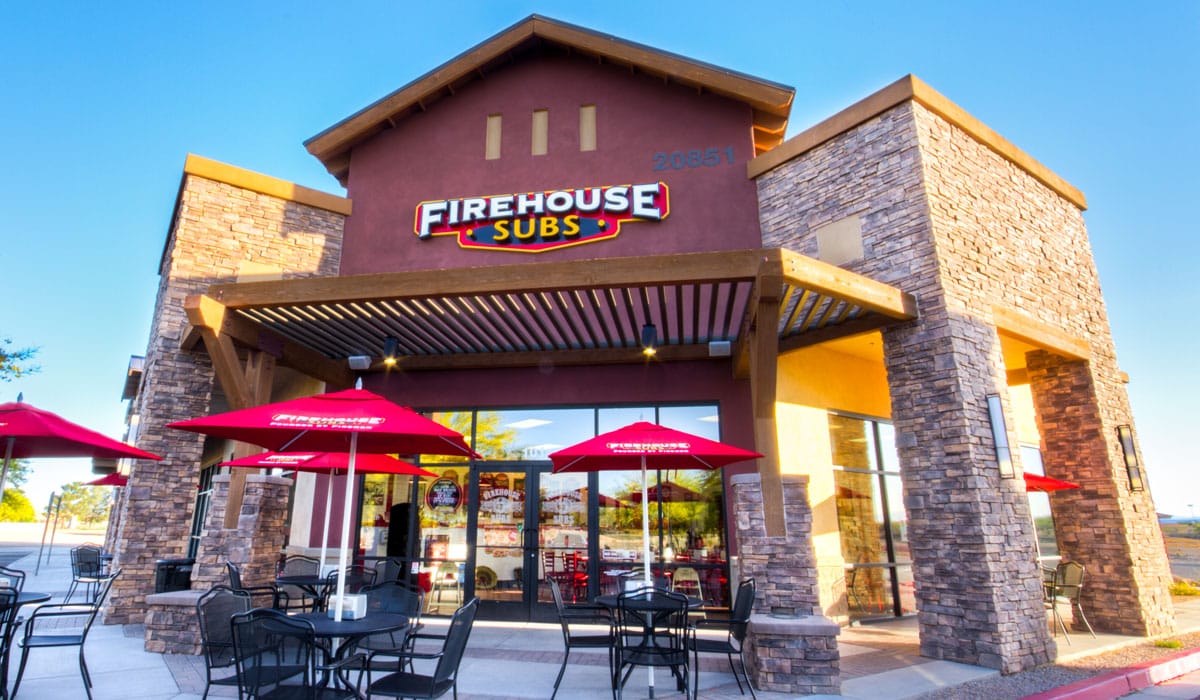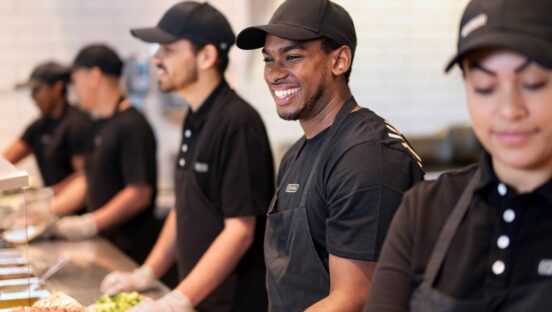The COVID-19 journey for restaurants was often a tale of the haves and have-nots. Well-capitalized brands guarded capital, stock-piled assets, and got aggressive when the day to do so arrived. Many independents and small shops didn’t have the luxury. Thin cash reserves forced them to confront COVID as a Groundhog Day episode of Survivor. And it stretched for months.
There were 763,931 restaurants pre-coronavirus, according to Datassential’s Firefly platform. By summer, 90,296 closed permanently. Alongside 12,596 openings, the tally was 698,176 units as recovery began to flip into gear, or a net loss of 65,755 restaurants.
Nearly 9 percent of the total field gone in about 16 months.
This rationalization left behind a different world. Of the closures, 7.4 percent were national chains, 13.3 percent regional, and 8.5 percent independent. Fine-dining restaurants accounted for 10.9 percent of the cut, while casual dining represented 9.2 percent, and midscale 9.1 percent. Food trucks absorbed the biggest blow, with 19.5 percent of the pool closing during COVID. Quick-service and fast-casual, meanwhile, trailed the pack at 7.9 and 7.2 percent, respectively.
As you might expect, restaurant franchising felt the pandemic crush like any other sector. According to FranConnect, a management solutions company, lead generation was significantly depressed across America in 2020. Enterprise brands saw leads fall 36 percent. More notable, though, deals per brand tumbled off a cliff for restaurants, with quick-serves plunging 63 percent and sit-down chains nearly 80 percent.
The International Franchise Association, based on FRANdata statistics, said quick-service franchise venues retracted 6.7 percent in 2020. But it projects the field to grow 4.1 percent in 2021.
This is optimism experts around the franchising community share. Firehouse Subs CEO Don Fox believes a post-COVID arena will be “increasingly favorable for franchising in general.”
“I do think the landscape will be a little bit different in terms of what brands might be able to tap into,” Fox says. “Because, I think, as a result of the pandemic, for quite some time people’s nature is going to be to look at a particular brand they might invest in and look very heavily at the performance of the brand during the pandemic, with the thought that this could happen again. It’s going to factor very much into people’s thinking.”
To understate it, the notion of a global health crisis was a non-issue before COVID, in terms of investment prospects. Few considered such a thing even possible in today’s age, let alone at a scale that could freeze in-person dining north of a calendar year.
Fox says Firehouse, which exited 2020 with 1,102 franchised stores (along with 38 corporate), had a solid pipeline headed into the year. But reflective of FranConnect’s data, progress crawled at the height of COVID. People, understandably, were reluctant to part with savings and even more hesitant to back one of the hardest-hit sectors in the country.
Yet that’s exactly where this conversation is changing.
Interest in Firehouse from prospective and current franchises has fired up in recent months. “We talk proactively about what our experience has been because we have a great story,” Fox says. “Unprecedented level of success. Sales every week have set new records.”
The first Monday of the “official pandemic,” March 16, 2020, Firehouse stopped collecting royalties. A day later, it did the same for ad fees. It would be months before Firehouse asked operators for either. And even then, it came as deferred payments. Firehouse wanted to keep dollars in the wallets of franchisees until it had an idea where COVID was tracking.
However, although Firehouse didn’t realize it then, the chain completed its recovery—sales returning to prior-year levels—after just 10 weeks. “There’s no way I could have predicted that, especially through the first four,” Fox says. “At the end of Week 4, we were still 45 percent negative.”
Come summer, it was clear to Fox this wasn’t a short-term win. So the brand forgave all deferred royalties. This was a unique opportunity, Fox says, to gain “incredible goodwill” with Firehouse’s franchise community. “That is, from my perspective, opportunities like that will rarely every come around for you. It’s like a gift that’s handed to you divinely. And you can either leverage it or turn your back on it.”
Presently, Firehouse’s two-year same-store sales are comping, on any given week, 25 percent positive against 2019 levels. Fox credits it to broader realities, like stimulus payments and pent-up demand. But also to the brand’s digital expansion and the fact it’s at 2–2.5X in terms of dollars flowing through those channels. Like many restaurants, COVID gave Firehouse a chance to introduce consumers to off-premises; discovery from guests who didn’t prefer Firehouse for that occasion before. Or simply didn’t think of the brand as a takeout/delivery option.
In turn, you’re talking about a much different investment for franchisees today than pre-virus. The restaurant industry has gone from a question mark to a ship rocketing up a recovery wave.
Per Yelp, more than 3.7 million diners were seated via its platform in May 2021—an all-time high.
Food services and drinking places produced sales of $71.3 billion in May. The previous May? It was just $42.3 billion, according to Census data.
Dan Rowe, founder and CEO of Fransmart, a development company that helped scale Five Guys and QDOBA in the past, and works currently with a handful of concepts, including The Halal Guys, Curry Up Now, and Taffer’s Tavern, says closures brought on by COVID, while unfortunate, have altered the franchising outlook. And in an alluring way for those ready and willing to dive in.
“Two years ago, it was hard to be a franchisee because it was just tough to find locations,” Rowe says. “It just felt like there were too many restaurants open. Too many businesses open. And COVID, as sad as it was, basically a third to 40 percent of restaurants that were open are closed or severely limping. And that goes across the spectrum of retail and service, and everything else.”
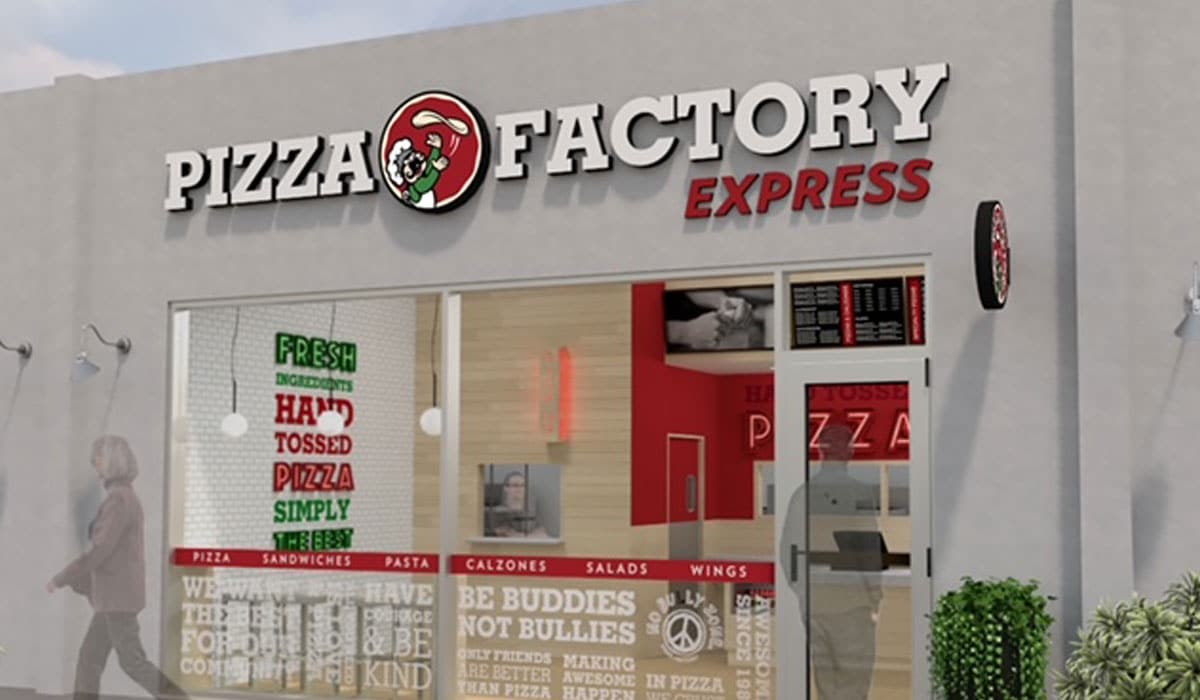
The great course correction
There’s meat to Rowe’s observation. As restaurants approached the turn of the century, per the Bureau of Labor Statistics, the number of units jumped close to 16 percent in the past decade. It felt, in some ways, like what occurred within America’s malls from 1970–2015, when it ballooned at twice the rate of the population.
In response, and with the disruption of ecommerce tossed in, the country witnessed a “retail-pocalyse” of sorts that ushered in what pundits argued was a healthier fleet of brands. Or as Warby Parker president Neil Blumenthal once put it: “It’s not the end of retail; it’s the end of bad retail.”
Restaurants happily flooded the real-estate gaps left behind, and, soon enough, restaurants, too, were growing at twice the rate of the population, according to the BLS (this was in 2017). Experts credited the rapid saturation to banks, private-equity firms, and other financial institutions pouring billions into restaurants as they sought steadier investments than dot-com startups, which had lost early steam.
Bankruptcies proliferated the field ahead of COVID as operators had dipped into an abundance of inexpensive money out of the Great Recession. As interest rates climbed back, those same parties had to write debt at higher interest rates. Tack on the rise of third-party delivery, C-stores, grocers, and a restaurant game with more options than ever for consumers, and many concepts found themselves in a zero-sum game. In other terms, a course correction, in some form, was in the cards.
COVID gave strong franchises a chance to emerge just like the Great Recession did with retail.
Rowe says he’s been out on site tours in recent weeks and there’s not only locations to be had, “but so many great locations that are open, that are available for somebody to go in and take over.”
The most common closure number Fox says he’s heard is 50,000–60,000. “Without doubt, and it’s very regional, there’s less restaurants out there,” he says, “in the magnitude of tens of thousands.”
“People who are in the business, already franchising, they know that. They are aware of the dynamic that’s created in their individual marketplace, and that’s created some whitespace. And I think that’s going to accelerate their interest in expanding.”
Concerning availability, to Rowe’s note, Fox says things haven’t played out as he expected so far.
But, ultimately, he thinks it will be a net positive factor. Better availability, and better value. “I’m not seeing that as soon as I thought,” Fox says.
It’s a changing climate. In June, Darden Restaurants CEO Gene Lee noted on an earnings call that speculation was actually driving up real estate prices—something that could be credited, in part, to private-equity firms and investors swooping in and betting on commercial real estate. The Wall Street Journal said in May commercial real estate prices had, at that juncture, climbed since July, erasing nearly half of the pandemic declines.
“Add all of this up and there exists a perfect-storm strategy for older, legacy franchise operators that allows them to reap the rewards of their many years of hard work,” says Andy Lapin, a real estate attorney with nearly four decades’ experience advising franchise owner/operators, investors, and developers.
Yet in Rowe’s observations, landlords appear more open today to making tenant-friendly deals with the right operators. “Things haven’t been in our favor, like this, in 20 years,” Rowe says. “You think about it—there’s the same number of people living in [a market] and you have a third less restaurants. And even some of the ones that are still open are just struggling. They’re having a tough time. They’ve been beaten up the last year and they’re fatigued. And so, somebody coming in with a fresh set of legs right now has a very easy time.”
This dynamic is favoring success stories. Quick-serves. Fast casuals. Rowe also points to Fransmart-fueled full-service brand Taffer’s Tavern, created by “Bar Rescue” star Jon Taffer. The brand debuted last November outside of Atlanta. It’s on track to do $5 million out of 5,000 square feet, Rowe says.
“I think it’s a good time right now,” he adds. “The issue that we’re still faced with right now is labor … But I think as soon as that [expanded unemployment benefits] ends, there’s going to be a lot of opportunity because you’re still going to have all these people, all these employees with a third less potential places to go to work.”
The line COVID slapped between successful and struggling brands extended into franchising. Successful, established operators—those who bounced back and then some—understand landlords are struggling, Rowe says. “And they kind of look at it like it’s the gold rush right now,” he says. “There’s a window. It’s kind of like buying stock when it’s down.”
When the market got clipped last March, a lot of traders panicked. Others jumped in. “And a lot of people made a lot of money on those dips,” Rowe said. “This, to me, is one of those buy-low, sell-high moments where you’re seeing existing franchisees that had a hard time before finding sites. And when you found them you had to pay whatever the landlord wanted. You paid top dollar. It was expensive to build brand-new restaurants.”
Now, conversions are there for the taking, which cost a fraction of the norm to get going.
“It’s almost like cheating, right?” Rowe says. “Because if it normally costs $500,000 to open up a restaurant that does $1 million and makes 20 percent, OK, that’s 40 percent return on investment. That’s not bad. But if you could open that restaurant for $200,000 and do $1 million, too, and make the same percentage, I mean, all of sudden you’re making over 100 percent ROI and within a year you’ve created enough money now to go build two of those. A couple of those restaurants, at some point, they self-fund.”
This reality is something that should inspire further franchise growth, Rowe says.
“Franchising is not fun when you have one location and you bought yourself a job. That’s a trap a lot of people fall into,” he says. “When you get into franchising, you think it’s an ATM. But when you only have one you really bought yourself a job. Where if you can build one and it’s successful and you roll the money into another one and into another one, at some point, those things start to self-fund growth. And you can go from three to like 23, all on house money. That’s what’s being sped up because of COVID. Because of all of these conversion opportunities. Instead of spending $500,000, getting a 30–40 percent ROI, you’re spending $200,000 and getting 100 percent ROI.”
Rowe agrees with Fox’s intangible point—the idea taking care of operators during the COVID trough will provide a boon down the line. The brands that adapted and remained relevant, and helped franchisees along the way, are positioned to turn logistical opportunities, like real estate, into realities. “Let’s share the risk, share the reward,” Rowe says. “Those are the ones that are going to grow.”
Dale Ballweg, Culver’s vice president of operations, says the burger brand’s system, which boasts fewer than 10 company-run stores, banded together. “We emerged stronger from the pandemic,” Ballweg says. “Although we have almost 800 restaurants across 25 states, we were truly in it together. We listened, communicated, and worked together faster than ever before to face a challenge we could’ve never predicted.”
In 2020, Culver’s opened a company record 50 restaurants. And it’s on pace to meet or eclipse that figure this year. Ballweg says growth is stemming mainly from existing franchisees—84 percent versus 16 percent from new owner-operators. While it’s a statistic Culver’s historically sees, and not a COVID shift, it’s still proof the brand did right by its franchisees, Ballweg says. “We listened and moved quickly on new ideas coming from operators and amplified them to support all of our operators,” he says. “We also relied on the creativity and adaptability of our team members to take orders outside and redirect traffic, keeping lines moving and reducing wait times. Further, we allowed guests to call in orders by phone for pickup, or even order curbside by pulling into identified parking spots and calling a number to place their orders and have food delivered right to their cars.”
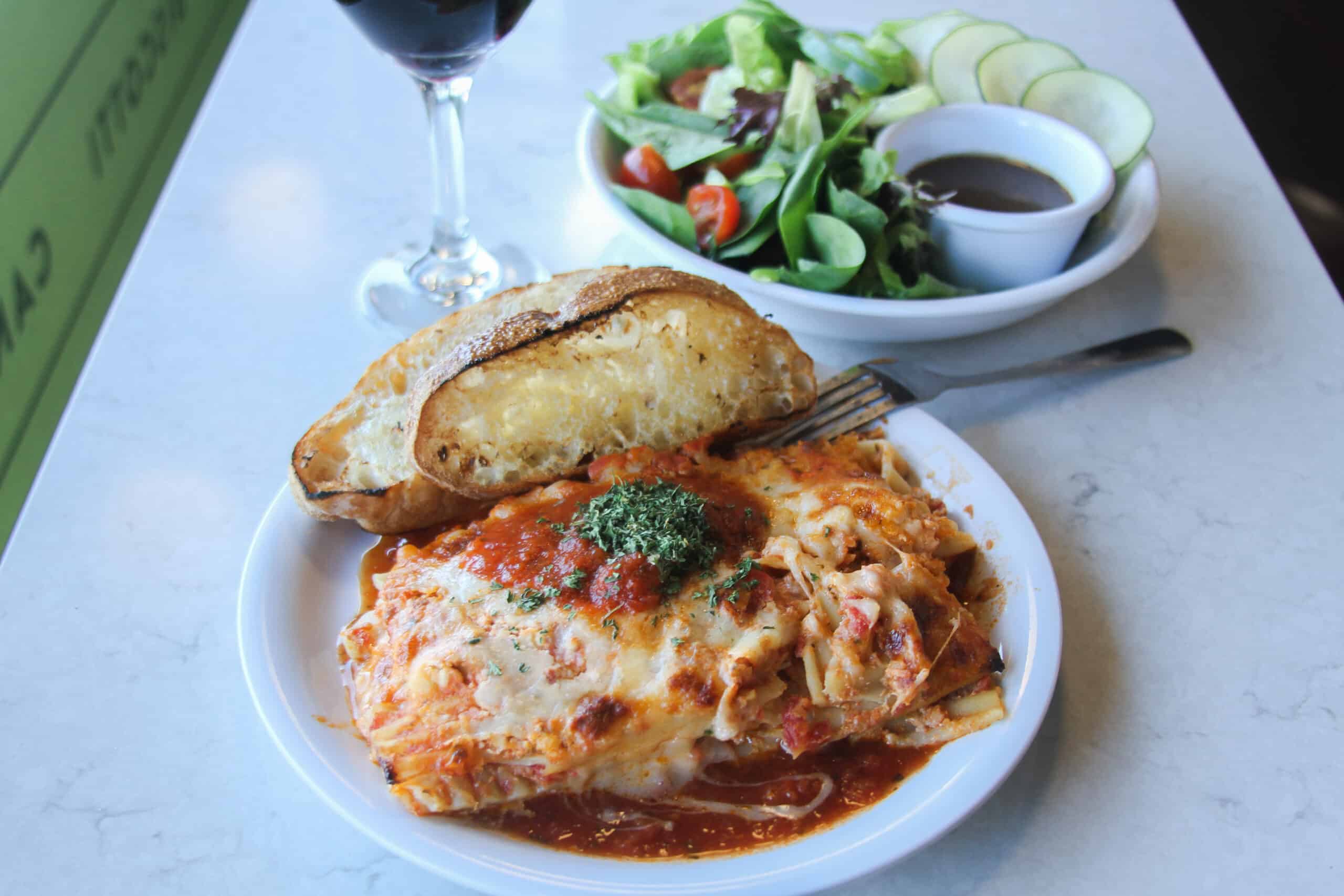
History, financing, and a future of possibility
The boom of fast-food franchising ties its roots to the 1950s. Back then, franchisors wanted “mom-and-pop” operators to key their systems, says Andy Lapin, a real estate attorney with nearly four decades’ experience advising franchise owner/operators, investors, and developers. In fact, franchise agreements were drafted to restrict operators from developing and expanding rapidly.
Specifically, common deals in those days did not allow private placement/syndicated partnership financing, public financing, and conventional commercial lenders who did not understand the fast-food model. The result was expansion achievable only through cash generated by an operator’s existing restaurants, or from somebody’s personal resources.
As any franchisee laments, it takes a lot of capital to develop a new location without help. In the 1980s, however, this began to shift as franchisors rethought the mom-and-pop lure and instead started to focus development through larger, well-financed, multi-store operators.
What does this have to do with COVID? Lapin believes one future element of franchising to spring out of the pandemic will be larger, well-financed franchise operators fighting each other for the chance to expand. And one path will come through buying older legacy operator locations.
Those franchisees, being asked by brands to reinvent themselves and address ample concerns of a changing consumer, may not see an ROI they want to get behind. The cost of reimaging a store, for instance, can run anywhere from the hundreds of thousands into the millions, per unit. Developing fresh locations costs upward of $2 million and beyond.
“Add all of this up and there exists a perfect-storm strategy for older, legacy franchise operators that allows them to reap the rewards of their many years of hard work,” Lapin says.
Many of the requirements brought on by millennials and COVID trends, like remodels, are forcing smaller, legacy operators to consider selling, Lapin says. At the same time, the big want to get bigger and they’re ready to pay and consolidate, as Rowe outlined, so their investments can begin to pay for themselves. The multiples for the sale of a fast-food franchise, historically, have sat around 4–4.5 times EBITDA, Lapin says. He’s seen some 15 times of late, with an average around 10–12. “Prices have gone up dramatically. Add in the fact with the pandemic that so many restaurants went out of business, and there’s lots of spaces available,” he says. “And because [quick-service] did so well during the pandemic, it’s one of the few areas in real estate that held up really well.”
Franchisees that want to buy out existing operators are being approved by franchisors, Lapin adds, but part of the cost is a requirement to sign a development agreement. These often require the purchasing party to agree to develop more stores within certain trade areas within certain timeframes. So vacated real estate left behind is going to get repurposed in a hurry to satisfy the deals large operators were cajoled into signing, Lapin says.
Put another way, don’t expect the restaurant industry to take its time getting back to saturation.
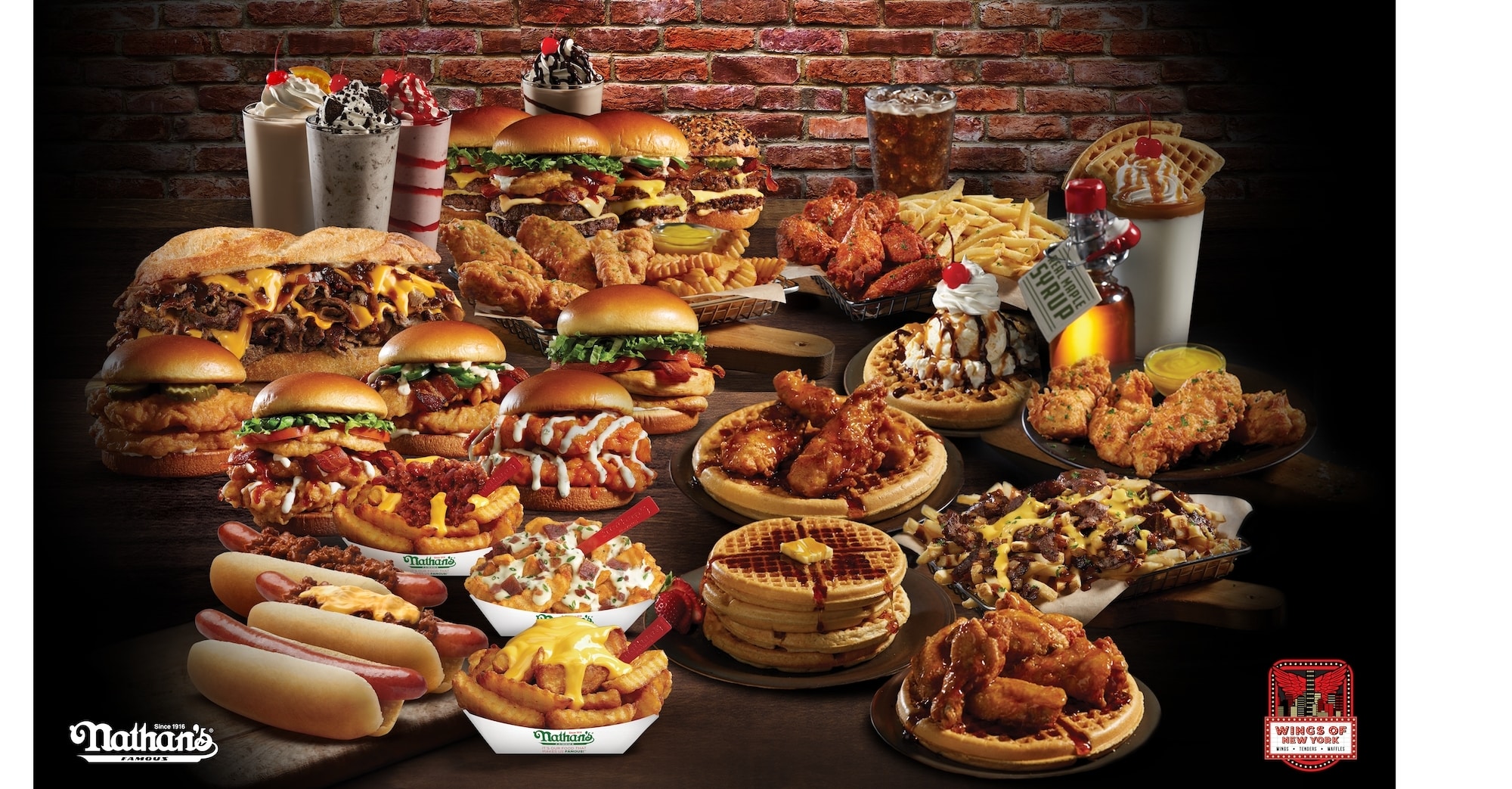
One thing Lapin says to pay attention to as growth-ready brands seek financing is “family offices.” These, by nature, are viewed as “long-term money” over more common short-term capital injections. Picture a wealthy family that wants to loan money on an investment that pays yield over a long period of time. “This allows for the goal alignment that is [sometimes] lacking with private equity,” Lapin says, referencing how some firms get in and out within four to seven years, while franchisees generally look at businesses as indefinite cash cows. And so, PE can sometimes force franchisees to buy it out at a substantial profit using borrowed funds, resulting in the business becoming over leveraged, Lapin says. When the market sags, the operator no longer has cash or the ability to borrow. Thus, it sells.
“I believe that family offices will become a good source of funding for quick-service restaurants moving forward,” Lapin says.
“Family money” has come up in Firehouse’s system a bit of late, Fox says. There’s one deal in particular going that route. And it’s a reflection, Fox and Lapin agree, of one aspect where COVID differs greatly from the Great Recession—the fact there’s plenty of money out there.
But questions remain. “I’ll tell you the challenge with the family pooling those resources,” Fox says. “It’s so dependent upon how the franchisor deals with that. What is the leverage? What’s the equity position? What’s the lien capacity? How do those investors have their talons into the business, and into the brand? And it can get very messy. And that is a potential landmine, I can tell you from some firsthand experience going way back in the history of Firehouse.”
“Family money” can take on different meanings. It isn’t always a literal nuclear group. It can be friends. Acquaintances. “You can walk into some mine fields with that,” Fox says. “And the potential damage is really the franchisor can find themselves in some very precarious positions if they’re not familiar with what the pitfalls can be. That’ll be interesting to see if that activity really picks up there.”
Returning to why this is even surfacing (money in people’s pockets) you can look at 2008 and 2020 from a similar vantage point: The world collapsed. However, in the Great Recession, the financial system broke apart, which created major disruptions to businesses and consumers alike. In 2020, that’s not the case, Lapin says. To the contrary. “Financial institutions were much stronger going into 2020 than 2008, partly as a result of legislation that was enacted after 2008 forcing financial institutions to carry more reserves and take other conservative measures to ensure they would not collapse in a future calamity,” he says. “In 2020, governments around the globe created instant and substantial liquidity to their economies and at the same time doled out money to support their consumers.”
As a result, consumers have funds to disperse. Add in pent-up demand and there’s reason to support the “restaurant renaissance.”
“Operators are looking to acquire existing restaurants and build new locations,” Lapin says. “This is pushing up the price of existing stores. Since quick-service has held up so well during the pandemic, the value of its real estate has increased, particularly to 1031 buyers who are concerned that the tax laws are going to change, increasing capital gains and perhaps eliminating the Section 1031 exchange vehicle. This is increasing the cost to acquire and develop new stores further eroding the ability of smaller operators to compete.”
This isn’t to say COVID won’t open the door for new operators. Jania Bailey, CEO of FranNet, a leading consultancy, says the majority of their clients through the decades (going back 33 years) have been outplaced executives or individuals who experienced corporate burnout. “They were ready to get out of the rat race,” she says.
“Most of these people are looking for that massive life change that allows them to take control of their own destiny,” Bailey says.
During the past year, COVID tested the mettle of companies and their ability to care for employees. It pulled the curtain back for a lot of workers. Going back to Fox and Rowe’s point, people recalibrated their lives during quarantine and looked at options. If they landed on franchising, it was easy to identify brands that stepped up and those that didn’t. “It really surfaced those that were undercapitalized, that weren’t prepared for any bump in the road, much less a pandemic,” Bailey says. “And the really strong franchisors, the cream of the crop, rose to the surface. It has strengthened, in a lot of ways, the franchise model and the whole industry of franchising because of that.”
“We proved that franchising was such a solid model because as you drive around your communities, the franchisees were able to stay open when most mom-and-pops were not. Of all types of business, not just food,” she adds. “Franchising really surfaced as the winner through all of that.”
“The stronger the base and the more solid the operation, those are the ones that will definitely see this as an opportunity to expand and an opportunity to get stronger,” says Jania Bailey, CEO of FranNet.
Fox expects to see a resurgence from independent operators. If you chart which restaurants closed, rationalization leaned toward that side of the sector. “And a lot of those folks, while terribly damaged [during COVID] realized that having been burned, especially in the casual-dining sector, having experienced firsthand the lack of resiliency in the face of the pandemic, if they’re going to stay in the industry and especially if they’re going to stay entrepreneurial, yeah they can go try to invent their own form of fast casual or [quick-service], more off-premises focused business, but the easier route to stay engaged in the business is to look to franchising with brands that have those attributes,” he says. “So, it wouldn’t surprise me if during the months ahead we see candidate pools fill up a bit from out of that sector.”
Moving forward, Bailey believes health-forward franchises are going to have a shot to serve renewed demand as people get their lives back on track. A chance for smaller brands to take a front seat to big-name franchises that enjoyed their turn during COVID. She says a generation of consumers modeled by the pandemic will emerge with high, demanding standards. And while that visibly drove technology changes, it also will create a vacuum for healthy fast-food to satisfy an evolving generation.
But knowing for sure which brands are going to boom and which aren’t, “That’s a question if I knew for sure I would be playing the stock market a lot heavier than I do,” she quips.
“The strong, and this goes back to my banking days [18 years in commercial lending and business development], strong, well-run organizations are always able to take advantage of downturns around them, Bailey says. “They’ve got the capital to expand when others are still catching their breath and trying to figure out how they’re going to put payroll together. The stronger the base and the more solid the operation, those are the ones that will definitely see this as an opportunity to expand and an opportunity to get stronger.”
“… We’re going to see a lot of the tried-and-true expand and take advantage of this real estate. It also presents some opportunities for newer franchises as long as they didn’t just burn up what funds they had over the last year trying to stay open. It’s advantageous to them to because the real estate is cheaper. The leases are being more palatable to a startup brand.”

